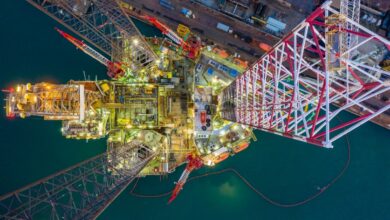Wood Mackenzie: Global upstream FIDs on track to double in 2017
According to a recent Wood Mackenzie report, “A big year for FIDs: 2017 marks a turning point,” the number of upstream projects reaching final investment decision (FID) in 2017 could double to 25 compared with only 12 last year.
In the first half of the year, the industry has already witnessed 15 project sanctions, which equates to about 8 billion bbl of oil equivalent (boe) of reserves, mostly in brownfield projects. This is almost comparable to project sanctions in the whole of 2016, which saw 12 FIDs and 8.8 billion boe of reserves approved.
“These are positive signs that the upstream industry is continuing on the road to recovery and that the more competitive conventional projects are moving down the cost curve sufficiently to attract new investment,” Angus Rodger, Research Director, Asia-Pacific Upstream, said.
“Eleven of the 15 project sanctions year-to-date are either brownfield expansions on existing fields, satellite developments or subsea tiebacks. Not only are these projects less risky than greenfield developments, they also tend to be less capital-intensive and are quicker to bring onstream, offering a quicker payback and better returns on development dollars,” Mr Rodger said. “This is reflected in lower development CAPEX per barrel and stronger project returns. For example, on average, project CAPEX is down to $11/boe versus $15/boe in 2015, and IRRs at 15% in 2017 versus 11% in 2015.” IRRs run on a flat $50/bbl Brent deck in 2017, escalating at 2% per annum thereafter.
Another clear trend is that the majors dominate the FIDs scene. Eight of 15 project sanctions in 2017 are operated by the majors. Of the 35 mid-to-large projects sanctioned since the start of 2015, 19 were major-operated. This equals just under 14 billion boe of the 22 billion boe total of commercial reserves sanctioned.
Wood Mackenzie estimates that these projects would make up 1.6 million boed of net new production to the majors by 2024, which is around 6% of total output from the peer group.
Conversely, national oil companies (NOCs) have tightened their purse strings and have been noticeably inactive on new project investments over the 2015 – H1 2017 period. Operating less than 1 billion boe of the 22 billion boe total of sanctioned commercial reserves, NOCs need to be on the lookout for investment opportunities as many face significant production declines post-2020.
“The second half of 2017 could see another 11 billion boe of reserves hit FID, and again we expect strong activity from the majors. However, it is also important to note that last month ExxonMobil sanctioned the first phase of development on the 1.5 billion boe Liza oil field. This goes to show that it is not just about short-cycle investments; the best greenfield opportunities are also moving forward to commercialization,” Mr Rodger said.




